80 start with M start with M

“Machiavellian” can signify duplicity and amorality in politics, but Machiavelli himself was far more complex than this cliché. A high-ranking Florentine government official and prolific writer of hugely influential political, military, and historical works, Machiavelli was also a vernacular poet, first-rank dramatist, and religious radical, rejecting not only the contemporary Catholic Church but Christianity itself. From champion of Florentine popular republicanism to political radical to conservative, Machiavelli explores the many facets of the man described as the father of modern political philosophy and political science.
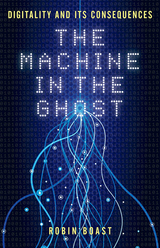
Boast tackles this fundamental question by exploring the origins of the digital and showing how digital technology works. He goes back to 1874, when a French telegraph engineer, Jean-Maurice-Émile Baudot, invented the first means of digital communication, the Baudot code. From this simple 5-bit code, Boast takes us to the first electronic computers, to the earliest uses of graphics and information systems in the 1950s, our interactions with computers through punch cards and programming languages, and the rise of digital media in the 1970s.Via various and sometimes unanticipated historical routes, he reveals the foundations of digitality and how it has flourished in today’s explosion of technologies and the forms of communication and media they enable, making real the often intangible force that guides so much of our lives.

Christopher Frayling traces the genealogy of the scientist in film, showing how the scientist has often embodied the predominant anxieties of a particular historical moment. The fear of nuclear holocaust in the 1950s gave rise to a rash of radioactive-mutant horror movies, while the possible dangers of cloning and biotechnology in the 1990s manifested themselves in Jurassic Park. During these eras, the scientist's actions have been viewed through a lens of fascination and fear. In the past few decades, with increased public awareness of environmental issues and of the impact of technology on nature, the scientist has been transformed once again—into a villainous agent of money-hungry corporate powers. Mad, Bad and Dangerous? also examines biographical depictions of actual scientists, illuminating how they are often portrayed as social misfits willing to sacrifice everything to the interests of science.
Drawing on such classic and familiar films as Frankenstein, Metropolis, and The Wizard of Oz, Frayling brings social and film history together to paint a much larger picture of the evolving value of science and technology to society. A fascinating study of American culture and film, Mad, Bad and Dangerous? resurrects the scientists of late night movies and drive-in theaters and gives them new life as cultural talismans.
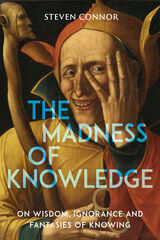
In an age of artificial intelligence, alternative facts, and mistrust of truth, The Madness of Knowledge offers an opulent, enlarging, and sometimes unnerving psychopathology of intellectual life.

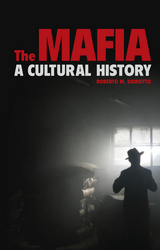
Dainotto traces the development of the mafia from its rural beginnings in Western Sicily to its growth into a global crime organization alongside a parallel examination of its evolution in music, print, and on the big screen. He probes the tension between the real mafia—its violent, often brutal reality—and how we imagine it to be: a mythical potpourri of codes of honor, family values, and chivalry. But rather than dismiss our collective imagining of the mafia as a complete fiction, Dainotto instead sets out to understand what needs and desires or material and psychic longing our fantasies about the mafia—the best kind of the bad life—are meant to satisfy.
Exploring the rich array of films, books, television programs, music, and even video games portraying and inspired by the mafia, this book offers not only a social, economic, and political history of one of the most iconic underground cultures, but a new way of understanding our enduring fascination with the complex society that lurks behind the sinister Omertà of the family business.

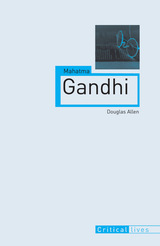
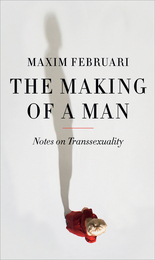
Februari contemplates the many questions that sexual transitions entail: the clinical effects of testosterone, the alteration of sexual organs, and its effects on sexual intimacy; how transsexuality figures in the law; and how it challenges the way we talk about sex and gender, such as the seemingly minor—but crucially important—difference between the terms “transsexual” and “transgender.” He analyzes our impressions of effeminate men and butch women, separating apparent acceptance from actual prejudice, and critically examines the curious requirement in many countries that one must demonstrate a psychological disturbance—a “gender identity disorder”—in order to be granted sex change therapies. From there he explores the seemingly endless minutiae changing genders or sex effect, from the little box with an M or an F on passports to the shockingly sudden way testosterone can adjust physical features.
With his characteristically clear voice combined with intimate—sometimes moving, sometimes funny—ruminations, Februari wakes readers up to all the ways, big and small, our world is structured by sex and gender.

The gardens Hunt explores offer surprising new ideas about how we can carve out a space for respite in nature. Taking readers to gardens public and private, busy and hidden away, to botanical gardens, small parks, university campuses, and vernacular gardens, Hunt showcases the differences between cultures and countries around the globe, including the United States, United Kingdom, France, Germany, China, and Australia. Richly illustrated, The Making of Place is sure to enchant and inspire even the most modest of home gardeners.

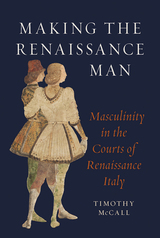
Making the Renaissance Man explores the images, objects, and experiences that fashioned men and masculinity in the courts of fifteenth-century Italy. Across the peninsula, Italian princes fought each other in fierce battles and spectacular jousts, seduced mistresses, flaunted splendor in lavish rituals of knighting, and demonstrated prowess through the hunt—all ostentatious performances of masculinity and the drive to rule. Hardly frivolous pastimes, these activities were essential displays of privilege and virility; indeed, violence underlay the cultural veneer of the Italian Renaissance. Timothy McCall investigates representations and ideals of manhood in this time and provides a historically grounded and gorgeously illustrated account of how male identity and sexuality proclaimed power during a century crucial to the formation of Early Modern Europe.
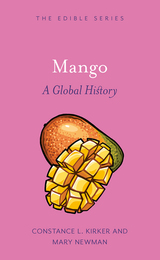
This beautifully illustrated book takes us on a tour through the rich world of mangoes, which inspire fervent devotion across the world. In South Asia, mangoes boast a history steeped in Hindu and Buddhist mythology, even earning a mention in the Kama Sutra. Beyond myth, the authors show us that mangoes hold literary significance as a potent metaphor. While mango-flavored smoothies grace Western grocery shelves, the true essence of sweet, juicy mangoes or tangy, unripe varieties is a rarity: supermarket offerings often prioritize shelf-life over taste.
This book offers an accessible introduction to the world of true mango aficionados and the thousand varieties they cherish.
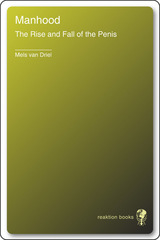
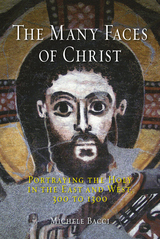
Taking into account a broad spectrum of iconographic and textual sources, Michele Bacci describes the process of creating Christ’s image against the backdrop of ancient and biblical conceptions of beauty and physicality as indicators of moral, ascetic, or messianic qualities. He investigates the increasingly dominant role played by visual experience in Christian religious practice, which promoted belief in the existence of ancient documents depicting Christ’s appearance, and he shows how this resulted in the shaping of portrait-like images that were said to be true to life. With glances at analogous progressions in the Jewish, Muslim, Buddhist, Hindu, Jain, and Taoist traditions, this beautifully illustrated book will be of interest to specialists of Late Antique, Byzantine, and medieval studies, as well as anyone interested in the shifting, controversial conceptions of the historical figure of Jesus Christ.
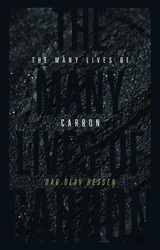
The Many Lives of Carbon is the story of this all-important chemical element, labeled C on our periodic tables. It’s the story of balance—between photosynthesis and cell respiration, between building and burning, between life and death. Dag Olav Hessen is our guide as we discover carbon in minerals, rocks, wood, and rain forests. He explains how carbon is studied by scientists, as well as its role in the greenhouse effect, and, not least, the impact of manmade emissions. Hessen isn’t afraid to ask the difficult questions as he confronts us with the literally burning issue of climate change. How will ecosystems respond to global change, and how will this feed back into our climate systems? How bad could climate change be, and will our ecosystems recover? What are our moral obligations in the face of excess carbon production? Neither alarmist nor moralistic, Hessen takes readers on a journey from atom to planet in informative, compelling prose.
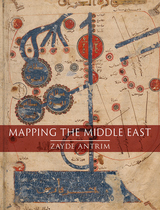
Organized chronologically, Mapping the Middle East addresses the medieval “Realm of Islam;” the sixteenth- to eighteenth-century Ottoman Empire; French and British colonialism through World War I; nationalism in modern Turkey, Iran, and Israel/Palestine; and alternative geographies in the twentieth and twenty-first centuries. Vivid color illustrations throughout allow readers to compare the maps themselves with Antrim’s analysis. Much more than a conventional history of cartography, Mapping the Middle East is an incisive critique of the changing relationship between maps and belonging in a dynamic world region over the past thousand years.
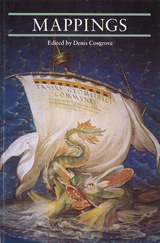
In their diverse expressions, maps and the representational processes of mapping have constructed the spaces of modernity since the early Renaissance. The map's spatial fixity, its capacity to frame, control and communicate knowledge through combining image and text, and cartography's increasing claims to scientific authority, make mapping at once an instrument and a metaphor for rational understanding of the world.
Among the topics the authors investigate are projective and imaginative mappings; mappings of terraqueous spaces; mapping and localism at the 'chorographic' scale; and mapping as personal exploration.
With essays by Jerry Brotton, Paul Carter, Michael Charlesworth, James Corner, Wystan Curnow, Christian Jacob, Luciana de Lima Martins, David Matless, Armand Mattelart, Lucia Nuti and Alessandro Scafi


Drawing on the artist’s own correspondence as well as interviews, Paris-based curator and art critic Caroline Cros explores the creative processes behind Duchamp’s works—including his famous anti-sculptures, the "Readymades"; the enigmatic Grand Verre; and the seductive, disturbing Etant Donnés—as well as the often hostile reception he encountered in Paris and around the world.
Cros also examines Duchamp’s work after he abandoned his art at the age of thirty-six. Notoriously, Duchamp claimed that he would dedicate the remainder of his life to chess, but here we learn of his ongoing contributions to the art world, including his intense involvement in museums, foundations, and surrealist publications.
With two major Dada exhibitions planned for 2006, at the National Gallery of Art in Washington, D.C., and the Museum of Modern Art in New York, MarcelDuchamp will be this year’s ultimate guide to the master of the movment.


At the age of seventeen, Marco Polo left his Venetian home on a continent-spanning adventure that lasted for nearly a quarter century. Imprisoned in Genoa five years later, he collaborated with Arthurian romance writer Rustichello of Pisa on a work they called The Description of the World. That book recounted “all the greatest marvels and great diversities of Greater Armenia, Persia, the Tartars, India, and many other provinces,” a story that made Polo famous for all time.
In Marco Polo and His World, Sharon Kinoshita brings these marvels to life, describing the myriad commodities, plants, people, and animals that Marco encountered and recorded. Copiously illustrated, this book offers a vibrant introduction to Marco Polo’s astounding adventures.

This is a new account of the medieval mystic and pilgrim Margery Kempe. Kempe, who had fourteen children, traveled all over Europe and recorded a series of unusual events and religious visions in her work The Book of Margery Kempe, which is often called the first autobiography in the English language. Anthony Bale charts Kempe’s life and tells her story through the places, relationships, objects, and experiences that influenced her. Extensive quotations from Kempe’s Book accompany generous illustrations, giving a fascinating insight into the life of a medieval woman. Margery Kempe is situated within the religious controversies of her time, and her religious visions and later years put in context. And lastly, Bale tells the extraordinary story of the rediscovery, in the 1930s, of the unique manuscript of her autobiography.

In this new account of one of the most fascinating, charismatic, and gifted characters in American literature, Kevin J. Hayes reviews Twain’s life and work, from his early journalism to his masterpiece Huckleberry Finn, and from the travelogue Life on the Mississippi to the public-speaking engagements that took him around the world, to his final work: the sprawling compendium Mark Twain’s Autobiography. Synthesizing the latest information and sifting through the evidence culled from both stories and certainties, Mark Twain is a fresh, clear-sighted account of a crucial American voice.

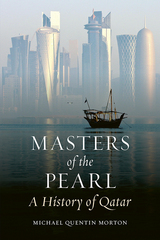

Chemists, Morris shows, are one of the leading drivers of innovation in laboratory design and technology. He tells of fascinating lineages of invention and innovation, for instance, how the introduction of coal gas into Robert Wilhelm Bunsen’s laboratory led to the eponymous burner, which in turn led to the development of atomic spectroscopy. Comparing laboratories across eras, from the furnace-centered labs that survived until the late eighteenth century to the cleanrooms of today, he shows how the overlooked aspects of science—the architectural design and innovative tools that have facilitated its practice—have had a profound impact on what science has been able to do and, ultimately, what we have been able to understand.

Take a deep breath. Air—without it, life on Earth would cease to exist. Though not usually seen, its presence is relied upon. At once both ethereal and physical, air has been associated with flight and spirit, and yet it has progressively become a territory that can be claimed through communications, warfare, travel, and scientific exploration. At the same time, air is no longer a completely reliable part of our daily life: like water, it has become an environmental element that must be watched closely for quality and purity.
A Matter of Air investigates the meanings of air over the last three centuries, including our modern concern over emissions and climate change. Steven Connor looks at the human relationship with air, both positive and negative. His explorations include the dangers posed by radio atmospherics, poison gas, and haze as well as our continued fascination with effervescence and explosives. Drawing ideas from religion, science, art, literature, and philosophy, A Matter of Air creates a comprehensive history of the human perception of air. Thoroughly researched and written with wit and quirky enthusiasm, the book will appeal to a wide range of general readers interested in the environment, human history, and our most essential aspects of life.
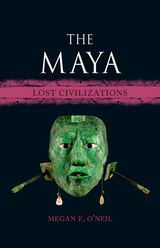
This book reveals how the ancient Maya—and their buildings, ideas, objects, and identities—have been perceived, portrayed, and exploited over five hundred years in the Americas, Europe, and beyond.
Engaging in interdisciplinary analysis, the book summarizes ancient Maya art and history from the preclassical period to the Spanish invasion, as well as the history of outside engagement with the ancient Maya, from Spanish invaders in the sixteenth century to later explorers and archaeologists, taking in scientific literature, visual arts, architecture, world’s fairs, and Indigenous activism. It also looks at the decipherment of Maya inscriptions, Maya museum exhibitions and artists’ responses, and contemporary Maya people’s engagements with their ancestral past. Featuring the latest research, this book will interest scholars as well as general readers who wish to know more about this ancient, fascinating culture.
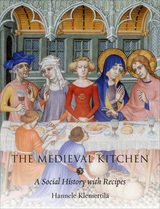
We don’t usually think of haute cuisine when we think of the Middle Ages. But while the poor did eat a lot of vegetables, porridge, and bread, the medieval palate was far more diverse than commonly assumed. Meat, including beef, mutton, deer, and rabbit, turned on spits over crackling fires, and the rich showed off their prosperity by serving peacock and wild boar at banquets. Fish was consumed in abundance, especially during religious periods such as Lent, and the air was redolent with exotic spices like cinnamon and pepper that came all the way from the Far East.
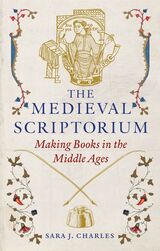
This book takes the reader on an immersive journey through medieval manuscript production in the Latin Christian world. Each chapter opens with a lively vignette by a medieval narrator—including a parchment maker, scribe, and illuminator—introducing various aspects of manuscript production. Sara J. Charles poses the question “What actually is a scriptorium?” and explores the development of the medieval scriptorium from its early Christian beginnings through to its eventual decline and the growth of the printing press.
With the written word at the very heart of the Christian monastic movement, we see the immense amount of labor, planning, and networks needed to produce each manuscript. By tapping into these processes and procedures, The Medieval Scriptorium helps us to experience medieval life through the lens of a manuscript maker.
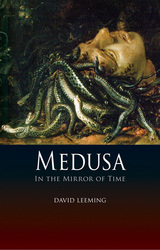
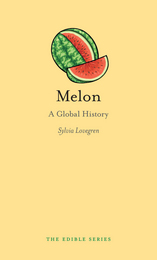
Along the way, Lovegren details the impact the melon has had on humankind. Moving from ancient and medieval medical recipes to folk tales, stories, growing contests, and genetics, she explores the diverse ways we have cultivated, enjoyed, and sometimes even feared this fruit. She explores how we have improved modern melons over centuries of breeding, and how some growers and scientists today are trying to preserve and even revive ancient melon strains. Richly illustrated and with a host of ancient, medieval, and modern recipes, Melon is a delightful look at the surprising history of one of the world’s most sumptuous fruits.
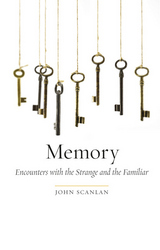
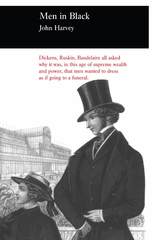
"Why can't we pick out our own color?"
Joe:
"I tried that once, it don't work. You get four guys fighting over who's gonna be Mr. Black."
—Quentin Tarantino, Reservoir Dogs
Men's clothes went black in the nineteenth century. Dickens, Ruskin and Baudelaire all asked why it was, in an age of supreme wealth and power, that men wanted to dress as if going to a funeral. The answer is in this history of the color black. Over the last 1000 years there have been successive expansions in the wearing of black—from the Church to the Court, from the Court to the merchant class. Though black as fashion was often smart and elegant, its growth as a cultural marker was fed by several currents in Europe's history—in politics, asceticism, religious warfare. Only in the nineteenth century, however, did black fully come into its own as fashion, the most telling witnesses constantly saw connections between the taste for black and the forms of constraint with which European society regimented itself.
Concentrating on the general shift away from color that began around 1800, Harvey traces the transition to black from the court of Burgundy in the 15th century, through 16th-century Venice, 17th-century Spain and the Netherlands. He uses paintings from Van Eyck and Degas to Francis Bacon, religious art, period lithographs, wood engravings, costume books, newsphotos, movie stills and related sources in his compelling study of the meaning of color and clothes.
Although in the twentieth century tastes have moved toward new colors, black has retained its authority as well as its associations with strength and cruelty. At the same time black is still smart, and fashion keeps returning to black. It is, perhaps, the color that has come to acquire the greatest, most significant range of meaning in history.

Merchants of Style explores the accelerating convergence of art and fashion, looking at the interplay of artists and designers, and the role of institutions—both public and commercial—that have brought about this marriage of aesthetic industries. The book argues that one figure more than any other anticipated this moment: Andy Warhol. Beginning with an overview of art and fashion’s deeply entwined histories, and then picking up where Warhol left off, Merchants of Style tells the story of art’s emboldened forays into commerce and fashion’s growing embrace of art. As the two industries draw closer together than ever before, this book addresses urgent questions about what this union means and what the future holds.
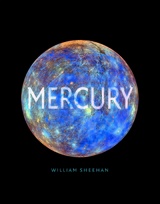
In this fully up-to-date and beautifully illustrated account, William Sheehan describes the growth of our knowledge of planet Mercury. From the puzzles it posed for early astronomers to radar studies in the 1960s, and from the first spacecraft fly-bys by the Mariner 10 probe in the 1970s to the latest images from the Mercury Surface, Space Environment, Geochemistry, and Ranging (MESSENGER) orbital mission between 2011 and 2015, Mercury has slowly been brought into clear focus. But although we have now mapped its surface in exquisite detail, revealing strange features like volcanic plains and water-ice deposits in craters near the poles, mysteries remain—such as why its core has the highest iron content of any body of the Solar System. Rather than growing duller on closer acquaintance, this most mercurial of planets continues to fascinate us, offering important clues to scientists as they seek to better understand the origin and evolution of the Earth.
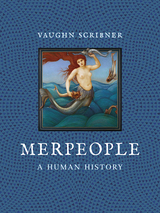
People have been fascinated by merpeople and merfolk since ancient times. From the sirens of Homer’s Odyssey to Hans Christian Andersen’s The Little Mermaid and the film Splash, myths, stories, and legends of half-human, half-fish creatures abound. In modern times “mermaiding” has gained popularity among cosplayers throughout the world. In Merpeople: A Human History, Vaughn Scribner traces the long history of mermaids and mermen, taking in a wide variety of sources and using 117 striking images. From film to philosophy, church halls to coffee houses, ancient myth to modern science, Scribner shows that mermaids and tritons are—and always have been—everywhere.
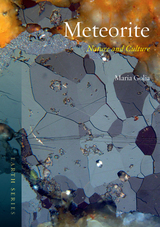
A richly illustrated, remarkably wide-ranging account of the culture and science surrounding meteorites, Golia’s book explores the ancient, lasting power of the meteorite to inspire and awe.
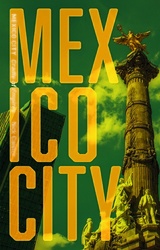
This book explores how the city has grown and evolved from the Tenochtitlan city-state of the Aztecs to the capital of the Spanish empire’s “New Spain,” French intervention, revolution, and the newly branded CDMX. Nick Caistor leads us through centuries of history and into the material city of today: from recently constructed museums and shopping malls, to neighborhoods where age-old traditions still appear to be the norm. Whether sampling ice cream at Xochimilco, watching freestyle wrestling at the Arena Mexico, or savoring long Mexican breakfasts, Nick Caistor reveals why Mexico City continues to fascinate and beguile us.
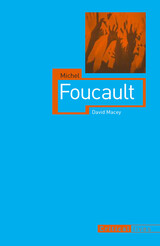
There is no better thinker than Foucault with which to begin the "Critical Lives" series. Though reticent about his personal life for most of his career, Foucault, in the last years of his life, changed his stance on the relationship between the personal and the intellectual and began to speak of an "aesthetics of existence" in which "the life" and "the work" become one. David Macey, a renowned expert on Foucault, demonstrates that these contradictions make it possible to relate Foucault's work to his life in an original and exciting way. Exploring the complex intellectual and political world in which Foucault lived and worked, and how that world is reflected in his seminal works, Macey paints a portrait of Foucault in which the thinker emerges as a brilliant strategist, one who-while fiercely promoting himself as a maverick-aligned himself with particular intellectual camps at precisely the right moments.
Michel Foucault traces the philosopher's career from his comfortable provincial
background to the pinnacle of the French academic system, paying careful attention to
the networks of friendships and the relations of power that sustained Foucault's
prominence in the academy. In an interview in 1966, Foucault said, "One ought to read
everything, study everything. In other words, one must have at one's disposal the general
archive of a period at a given moment." It is precisely this archive that Macey restores
here, accessibly relating Foucault's works to the particular context in which they were
given form.

As Barnes shows, Michelangelo’s works were made to be viewed in churches, homes, and political settings, by people who brought their own specific needs and expectations to them. Rarely were his paintings and sculptures viewed in quiet isolation—as we might today in the stark halls of a museum. Instead, they were an integral part of ritual and ceremonies, and viewers would have experienced them under specific lighting conditions and from particular vantages; they would have moved through spaces in particular ways and been compelled to relate various works with others nearby. Reconstructing some of the settings in which Michelangelo’s works appeared, Barnes reassembles these experiences for the modern viewer. Moving throughout his career, she considers how his audience changed, and how this led him to produce works for different purposes, sometimes for conventional religious settings, but sometimes for more open-minded patrons. She also shows how the development of print and art criticism changed the nature of the viewing public, further altering the dynamics between artist and audience.
Historically attuned, this book encourages today’s viewers to take a fresh look at this iconic artist, seeing his work as they were truly meant to be seen.

In The Middle Ages and the Movies, eminent historian Robert Bartlett takes a fresh, cogent look at how our view of medieval history has been shaped by eight significant films of the twentieth century. The book ranges from the concoction of sex and nationalism in Mel Gibson’s Braveheart, to Fritz Lang’s silent epic Siegfried, the art-house classic The Seventh Seal, and the epic historical drama El Cid. Bartlett examines the historical accuracy of these films, as well as other salient aspects—how was Umberto Eco’s Name of the Rose translated from page to screen? Why is Monty Python and the Holy Grail funny? And how was Eisenstein’s Alexander Nevsky shaped by the Stalinist tyranny under which it was filmed?
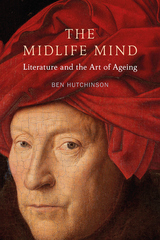

Exploring newly available archives that have opened up following the dissolution of the USSR, Curtis draws on new historical documents in order to trace Bulgakov’s life. She offers insights on his absolute determination to establish himself as a writer in Bolshevik Moscow, his three marriages and tumultuous personal life, and his triumphs as a dramatist in the 1920s. She also reveals how he struggled to defend his art and preserve his integrity in Russia under the close scrutiny of Stalin himself, who would personally weigh in each time on whether one of his plays should be permitted or banned. Based upon many years of research and examining previously little-known letters and diaries, this is an absorbing account of the life and work of one of Russia’s most inventive and exuberant novelists and playwrights.

Milk—“It does a body good.” It’s difficult to deny the truth of the American Dairy Council’s former advertising campaign. From birth milk is the sustaining and essential food of all mammals. It is the first food we ever taste. And yet, despite that natural relationship to milk, the majority of the world’s population cannot digest it in the form most often available to adults—cow’s milk.
In Milk, Hannah Velten explores the myths and misconceptions surrounding the ubiquitous drink. Modern milk processing produces a safe, clean beverage that is very different from pure milk straight from the cow. Nonetheless, there are many advocates of raw milk that long for the days before pasteurization, homogenization, and standardization. Yet milk in the time before these scientific processes was even less natural than today—known then as the white poison, it was bacteria-ridden, mixed with additives to make it look like milk after the cream was removed, filled with chemicals to promote its shelf life, and extremely watered down.
Now that milk is considered a staple of a healthy and balanced diet, Velten investigates how and why conceptions of milk have shifted in the public consciousness, from the science of nutrition to the dairy industry’s advertising campaigns. This highly illustrated exploration of one of the most fundamental foods and drinks also includes recipes for ice-cream, milkshakes, and even milk paint. Milk will surprise and entertain in equal measure.

Mina Loy was born in London in 1882, became American, and lived variously in New York, Europe, and finally, Aspen until she died in 1966. Flamboyant and unapologetically avant-garde, she was a poet, painter, novelist, essayist, manifesto-writer, actress, and dress and lampshade designer. Her life involved an impossible abundance of artistic friends, performance, and spectacular adventures in the worlds of Futurism, Christian Science, feminism, fashion, and everything modern and modernist.
This new account by Mary Ann Caws explores Mina Loy’s exceptional life and features many rare images of Mina Loy and her husband, the Swiss writer, poet, artist, boxer, and provocateur Arthur Cravan—who disappeared without a trace in 1918.

Unlike other theories, actualism differentiates among the three sides of consciousness—consciousness that is seeing, consciousness that is thinking, and consciousness that is wanting. Consciousness in seeing is not an image or picture in your head, but the existence out there of a real but subjective thing, dependent on both the objective physical world out there and on you as a person. In its attention to the concrete, actualism is becoming increasingly popular among philosophers, psychologists, and neuroscientists who had previously declared an urgent need for a new theory.
Honderich’s readable, understandable, and unpretentious writing lays out these bold concepts and complex thoughts with clarity and verve. He reinvents our understanding of ourselves, our consciousness, and our mind.

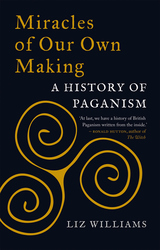
“An absolute must for anyone interested in the development of paganism in the modern world. I cannot recommend this book enough.”—Janet Farrar, coauthor of A Witches’ Bible
“At last, we have a history of British Paganism written from the inside, by somebody who not only has a good knowledge of the sources, but explicitly understands how Pagans and magicians think.”—Ronald Hutton, author of The Triumph of the Moon and The Witch
What do we mean by “paganism”—druids, witches, and occult rituals? Healing charms and forbidden knowledge? Miracles of Our Own Making is a historical overview of pagan magic in the British Isles, from the ancient peoples of Britain to the rich and cosmopolitan landscape of contemporary paganism. Exploring the beliefs of the druids, Anglo-Saxons, and Vikings, as well as Elizabethan Court alchemy and witch trials, we encounter grimoires, ceremonial magic, and the Romantic revival of arcane deities. The influential and well-known—the Golden Dawn, Wicca, and figures such as Aleister Crowley—are considered alongside the everyday “cunning folk” who formed the magical fabric of previous centuries. Ranging widely across literature, art, science, and beyond, Liz Williams debunks many of the prevailing myths surrounding magical practice, past and present, while offering a rigorously researched and highly accessible account of what it means to be a pagan today.
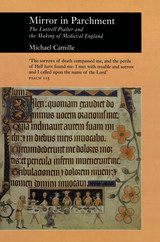
The richly illuminated Luttrell Psalter was created for the English nobleman Sir Geoffrey Luttrell (1276-1345). Inexpensive mechanical illustration has since disseminated the book's images to a much wider audience; hence the Psalter's representations of manorial life have come to profoundly shape our modern idea of what medieval English people, high and low, looked like at work and at play. Alongside such supposedly truthful representations, the Psalter presents myriad images of fantastic monsters and beasts. These patently false images have largely been disparaged or ignored by modern historians and art historians alike, for they challenge the credibility of those pictures in the Luttrell Psalter that we wish to see as real.
In the conviction that medieval images were not generally intended to reflect daily life but rather to shape a new reality, Michael Camille analyzes the Psalter's famous pictures as representations of the world, imagined and real, of its original patron. Addressed are late medieval chivalric ideals, physical sites of power, and the boundaries of Sir Geoffrey's imagined community, wherein agricultural laborers and fabulous monsters play a similar ideological role. The Luttrell Psalter thus emerges as a complex social document of the world as its patron hoped and feared it might be.
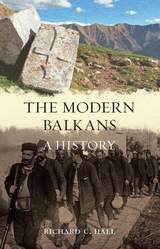
In The Modern Balkans, historian Richard C. Hall gives a complete account of the historical events that have shaped the Balkan region of Southeastern Europe. Originally separated from the rest of Europe by culture, politics, and economics, the Balkans have slowly been integrating into Western Europe since the nineteenth century. But this process of economic and political development, following the Western European model, has been far from smooth in the Balkans. As Hall explains, it has often been marked by violence and destruction, the result of many wars and rebellions. Though Soviet power imposed a nearly fifty-year peace in the region, the collapse of the Soviet Union renewed conflict that continued through the end of the twentieth century. Hall concentrates here on the significant political and economic events that have had the greatest impact on the role of the Balkans in Europe; in particular, he examines the development of national states in the nineteenth century, the influence of the two world wars, and the collapse of Yugoslavia.
This clear and concise history of the Balkan Peninsula will appeal to readers and scholars interested in European history and the Balkans’ unique role in it.

The shift from Victorian to modern style, The Modern Interior reveals, was not as simple and smooth as it is often perceived and the book probes the complicated history behind that transition. Sparke examines the work of such designers as Marcel Breuer, Frank Lloyd Wright, Charles and Ray Eames, and Mies van der Rohe, and draws upon design examples from the United States and Europe to reveal that, unlike the designed exteriors of buildings and institutions, the idea of the “interior” has been a largely abstract conception promoted through exhibitions, retail stores, and mass media.
A comprehensive and in-depth investigation of the design environments we live and play in, The Modern Interior will be essential reading for all scholars and interested observers of architecture and modern design culture.

Katarzyna J. Cwiertka demonstrates that key shifts in the Japanese diet were, in many cases, a consequence of modern imperialism. Exploring reforms in military catering and home cooking, wartime food management and the rise of urban gastronomy, Cwiertka shows how Japan’s numerous regional cuisines were eventually replaced by a set of foods and practices with which the majority of Japanese today ardently identify.
The result of over a decade of research, Modern Japanese Cuisine is a fascinating look at the historical roots of some of the world’s best cooking and will provide appetizing reading for scholars of Japanese culture and foodies alike.

With essays by Tim Benton, Gillian Naylor, Penny Sparke, Wendy Kaplan, Clive Wainwright, Martin Gaughan, Guy Julier, Mimi Wilms, Julian Holder and Paul Greenhalgh.
"The object of this book is to diffuse myths. If modernism has, in the past, been both absurdly praised and absurdly damned, Modernism in Design seeks to lift it out of this cycle, and to demonstrate that the modern movement could offer neither Jerusalem nor Babylon ... In this, the book succeeds admirably."—Designer's Journal
"While this collection of essays is aimed primarily at design historians and students of design history, hard-pressed practising designers and architects should make room for it on their bookshelves."—Design
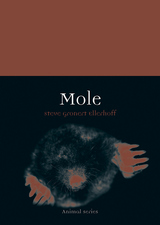

Spellman examines the intellectual assumptions behind different models of monarchy, tracing the ways in which each of these assumptions shifted in response to historical factors. While no human institution has retreated as rapidly in the modern period, monarchy's remarkable longevity invites us to weigh the significance of hierarchy, subordination and dependence as constants of the human experience.
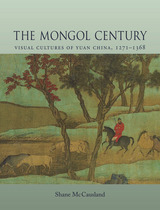
Although in recent years exhibitions have begun to open up the inherent paradoxes of Yuan culture, this is the first book in English to adopt a fully comprehensive approach. It incorporates a broad range of visual media of the East Asia region to reconsider the impact Mongol culture had in China, from urban architecture and design to tomb murals and porcelain, and from calligraphy and printed paper money to stone sculpture. Fresh and invigorating, The Mongol Century explores, in fascinating detail, the visual culture of this brief but captivating era of East Asian history.
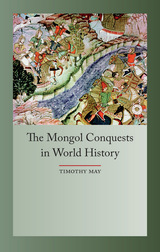
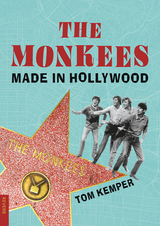
The behind-the-scenes story of the controversial 1960s made-for-tv rock band.
The Monkees represent a vital problem for rock and pop: is it the music that matters or the personality and image of the performers? This book explores the system behind the Monkees, the controversial made-for-TV band that scored some of the biggest hits in the 1960s. The Monkees represent the cumulative result of a complex coordination of talented individuals, from songwriters to studio musicians to producers—in short, the 1960s Hollywood music industry. At the time, the new rock criticism bewailed the “fake” band while fans and audiences pushed the Monkees to the top of the charts. Through the Monkees’ unlikely success, this book illustrates the commercial genius of the Hollywood system and its legacy in popular music today.
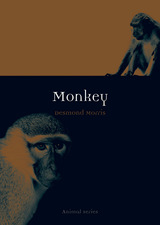
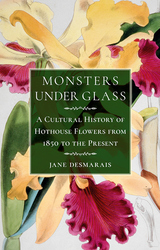
In a study as wide-ranging, vivid, and beautiful as our beloved exotic blooms themselves, Jane Desmarais charts the history and influence of these humid, tropical worlds and their creations, providing a steamy window onto our recent past.
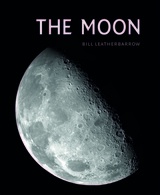
In The Moon, celebrated amateur astronomer Bill Leatherbarrow provides expert insight into the history of our study of this compelling astronomical body. Drawing on his own decades of lunar observation, he describes how and why the observation and study of the moon has evolved, particularly in the age of telescopic study. He also offers an overview of current scientific thinking and developments in lunar science since the advent of the Space Age, even providing practical advice on how to make your own observations of the moon. Extensively illustrated with images of the lunar surface taken both from spacecraft and using amateur equipment, this book is an accessible introduction to complex astrophysical concepts that will give all amateur astronomers and anyone fascinated by this natural satellite something to moon over.
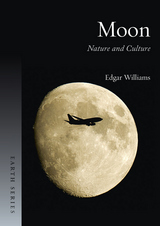
Edgar Williams explores the interdependence of the Earth and the moon, not only the possibility that life on Earth would not be viable without the moon, but also the way it has embedded itself in culture. In addition to delving into roles the moon has played in literature from science fiction and comics to poetry, he examines how Elizabeth I was worshipped as the moon goddess Diana, the moon’s place in folklore and astrology, and humanity’s long-standing dream of inhabiting its surface. Filled with entertaining anecdotes, this book is the kind of succinct, witty, and informative look at everything lunar that only comes around once in a blue moon.
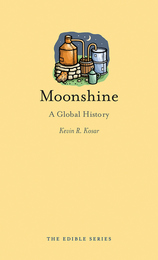
Kosar first surveys all the things we’ve made moonshine from, including grapes, grains, sugar, tree bark, horse milk, and much more. But despite the diversity of its possible ingredients, all moonshine has two characteristics: it is extremely alcoholic, and it is, in most places, illegal. Indeed, the history of DIY distilling is a history of criminality and the human ingenuity that has prevailed out of officials’ sights: from cleverly designed stills to the secret smuggling operations that got the goods to market. Kosar also highlights the dark side: completely unregulated, many moonshines are downright toxic and dangerous to drink. Spanning the centuries and the globe, this entertaining book will appeal to any food and drink lover who enjoys a little mischief.
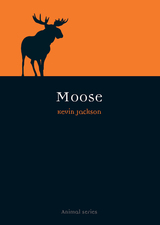
Moose explains moose’s biological history and describes its natural environments around the world, including Canada, New England, Alaska, and Scandinavia, where the moose is the national animal of Sweden and Norway. Jackson considers why the moose is really an elk and an elk is a wapiti, and he also looks at the controversy behind the naming of the Irish Elk. Moose explores the animal’s role in human history since the Stone Age, including the “alces” in Julius Caesar’s history of the Gallic Wars and its influence on figures such as poet Ted Hughes and Theodore Roosevelt and his Bull Moose Party. The Rocky and Bullwinkle Show, a 150-foot statue being built in Sweden, and colorful moose lore all appear in this wide-ranging study, making this an essential read for naturalists and moose lovers alike.

Bug zappers were invented for one purpose: to kill mosquitoes, the bane of many summer evenings, camping trips, and exotic vacations. These blood-sucking insects do more than leave us with itchy bites, though. The diseases they carry and inject, such as yellow fever, dengue fever, and the West Nile virus, make them responsible for more human deaths than any other animal. The most deadly of these, malaria, has been mostly eradicated from the northern hemisphere, but it continues to pose a mortal threat in developing countries. It kills nearly 700,000 of the 350 million that succumb to the infection each year, and the majority of the deaths occur in sub-Saharan Africa.

Moss and Lichen is a celebration of the extraordinary biology, beauty, and resilience of two unassuming organisms. Endowed with unique abilities to thrive in extreme habitats, mosses and lichens defy easy categorization. Mosses, which are integral to the plant kingdom, and lichens, which are a kingdom unto themselves, colonize a variety of landscapes from rainforests to deserts to urban streets. Long neglected for lacking flowers, these organisms are now beloved for their significant role in maintaining the health of our world’s ecosystem.
Elizabeth Lawson describes how mosses and lichens shape landscapes, prevent erosion, and sequester carbon, but she also offers a wide-ranging introduction to the biologists, artists, and writers inspired by their beauty. Moss and Lichen will inspire a newfound appreciation for these unsung heroes of the natural world.
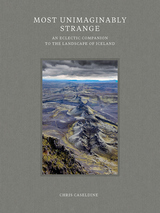
Described by William Morris as “most unimaginably strange,” the landscape of Iceland has fascinated and inspired travelers, scientists, artists, and writers throughout history. This book provides a contemporary understanding of the landscape as a whole, not only its iconic glaciers and volcanoes, but also its deserts, canyons, plants, and animals. The book examines historic and modern scientific studies of the landscape and animals, as well as accounts of early visitors to the land. These were captivating people, some eccentric but most drawn to Iceland by an enthrallment with all things northern, a desire to experience the land of the sagas, or plain scientific and touristic curiosity. Featuring many spectacular illustrations, this is a fine exploration of a most singular landscape.
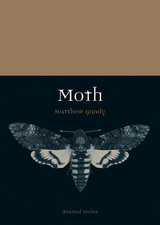
Gandy shows that the study of moths formed an integral part of early natural history. Many thousands of drawings, paintings, and physical specimens remain in museum collections, and in recent years there has been a renewed surge of interest facilitated by advances in digital photography, the internet, and new cartographic projects that have enabled direct collaboration between amateur experts and scientific research projects. He explores the rich history of vernacular names, which speaks to a significant place for moths in early cultures of nature. Names such as the Merveille-du-Jour, the Green Brindled Crescent, or the Clifden Nonpareil evoke a sense of wonder that connects disparate fields such as folklore, the history of place, and early scientific texts. With wingspans ranging in size from a few millimetres to nearly a foot, moths display an extraordinary diversity of evolutionary adaptions, which Gandy captures here.

After early incarnations as a nineteenth-century steam-powered bicycle and multi-wheeled vehicles, the modern motorcycle came into its own as a cheap, mobile military asset during World War I. From there, it rapidly spread through modern culture as a symbol of rebellion and subversive power, and Motorcycle tracks the symbolic role that the bike has played in literature, art, and film. The authors also investigate the international subcultures that revolve around the motorcycle and scooter. They chart the emergence of American biker culture in the 1950s, when decommissioned fighter pilots sought new ways to satiate their desire for thrill and danger, and explore how the motorcycle came to represent the untamed nonconformity of the American West. In contrast, smaller scooters such as the Vespa and moped became the utilitarian vehicle of choice in space-starved metropolises across Europe and Asia. Ultimately, the authors argue, the motorbike is the exemplary Modernist object, dependent on the perfect balance of man and machine.
An unprecedented and wholly engrossing account, Motorcycle is an essential reading for the Harley-Davidson roadhog, bike collector, or anyone who’s felt the power of the unmistakable king of the road.
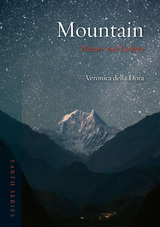
Veronica della Dora explores the ways mountains have functioned spiritually as a boundary between life and death, a bridge between the earth and the heavens. Interlacing science, culture, and religion, she sketches the mountain as a geological phenomenon that has profoundly influenced and been influenced by the human imagination, shaping our environmental consciousness and helping us understand our—quite small indeed—place in the world. She also explores their significance as objects of human feats, as prizes of adventure and sport, and as places of serene beauty for vacationers. Magnificently illustrated and showcasing famous peaks from all around the world, Mountain offers a fascinating dual portrait of these giants in nature and culture.

Examining the evolution, species, habitats, and behaviors of mice, Georgie Carroll reveals that they are accomplished survivors, having colonized six of the world’s continents and even traveled into space. As one of the earth’s smallest prey, the mouse, she shows, represents courage, perseverance, and adaptability. She surveys the depiction of mice in art, myth, literature, and folklore, considering how they are held in divine regard in the Hindu and Buddhist traditions. Carroll also delves into the integral place mice hold within the modern scientific endeavor—that of the laboratory animal. Telling the story of this beguiling creature in rich detail, Mouse is an intriguing look at an animal we have worshipped, tested, slaughtered, loved, and loathed.
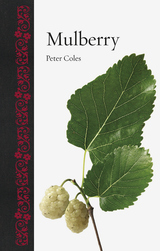
This sumptuously illustrated book tells the remarkable story of the mulberry tree and its migrations from China and Central Asia to almost every continent of the globe. It will appeal to all who wish to know more of the rich—and often juicy—history of this emblematic tree.
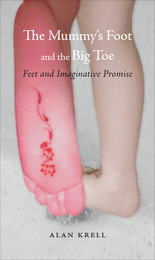
The Mummy’s Foot and the Big Toe explores the innumerable appearances of the foot in literature, photography, art, sports, and film. Walk with Krell as he discovers gothic tales by French writer Théophile Gautier, disturbing photographs by François Boiffard, and religious paintings by Giotto, Tintoretto, and Caravaggio that all exalt the foot. Marvel with him at the sporting exploits of elite barefoot runners such as Abebe Bikila and Zola Budd, and the surprising representation of the foot in films such as The Adventures of Huckleberry Finn and Kill Bill. Blending insights from the humanities, language studies, the social sciences, and anthropology, and presenting a wealth of tantalizing new images and ideas of the foot, The Mummy’s Foot and the Big Toe will help us all to be better acquainted with the soul and sole of our bottom-most appendage.

This book unfolds the gripping history of weaponized mail, offering the first-ever comprehensive exploration of this sinister phenomenon. Spanning two centuries, Murder by Mail unveils the history of postal bombs, describing the evolution of both explosives and the postal services that facilitated their deadly use. From an eighteenth-century incident involving Jonathan Swift to modern acts of terror by groups like the IRA, Suffragettes, and lone actors such as the Unabomber, it uncovers the surprising ubiquity of mail bombs.
This chronological account meticulously covers each decade, from early anarchists and world wars through the Cold War to the rise of the serial bomber. Astounding in scope, this book sheds light on the psychopathy, motivations, and political implications behind murder by mail.

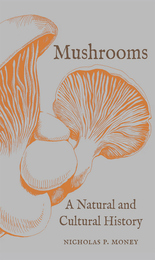
Mushrooms hold a peculiar place in our culture: we love them and despise them, fear them and misunderstand them. They can be downright delicious or deadly poisonous, cute as buttons, or utterly grotesque. These strange organisms hold great symbolism in our myths and legends. In this book, Nicholas P. Money tells the utterly fascinating story of mushrooms and the ways we have interacted with these fungi throughout history. Whether they have populated the landscapes of fairytales, lent splendid umami to our dishes, or steered us into deep hallucinations, mushrooms have affected humanity from the earliest beginnings of our species.
As Money explains, mushrooms are not self-contained organisms like animals and plants. Rather, they are the fruiting bodies of large—sometimes extremely large—colonies of mycelial threads that spread underground and permeate rotting vegetation. Because these colonies decompose organic matter, they are of extraordinary ecological value and have a huge effect on the health of the environment. From sustaining plant growth and spinning the carbon cycle to causing hay fever and affecting the weather, mushrooms affect just about everything we do. Money tells the stories of the eccentric pioneers of mycology, delights in culinary powerhouses like porcini and morels, and considers the value of medicinal mushrooms. This book takes us on a tour of the cultural and scientific importance of mushrooms, from the enchanted forests of folklore to the role of these fungi in sustaining life on earth.

In this delightful global history of all things Grey Poupon and gleaming yellow, Demet Güzey takes readers on a tour of the ubiquitous mustard, exploring its origins, its use in medicine and in the kitchen, its place in literature, language, and religion, and its strong symbolism of sharpness, perseverance, and strength. Packed with entertaining mustard facts and illustrations as well as a selection of historic and modern recipes, this surprising history of one of the world’s most loved condiments will appeal to all food history aficionados.
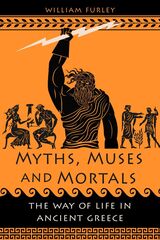
Myths, Muses and Mortals gives new insight into a multitude of life experiences in ancient Greece. The book introduces the lives of the ancient Greeks through extracts taken from a range of sources, including poems, plays, novels, histories, lawsuits, inscriptions, and private note tablets. The voices speak for themselves in fresh translation, but in addition, William Furley gives the narratives historical context and illuminates the literary genre in which they appear. The texts are grouped around important areas of life—love relations, travel and trade, social status, divine signs, daily events, warfare, philosophies, dress code, and private and public celebration—giving voice to the variety of lives experienced by the citizens of ancient Greece and an insight into the Greek mind.
READERS
Browse our collection.
PUBLISHERS
See BiblioVault's publisher services.
STUDENT SERVICES
Files for college accessibility offices.
UChicago Accessibility Resources
home | accessibility | search | about | contact us
BiblioVault ® 2001 - 2024
The University of Chicago Press









